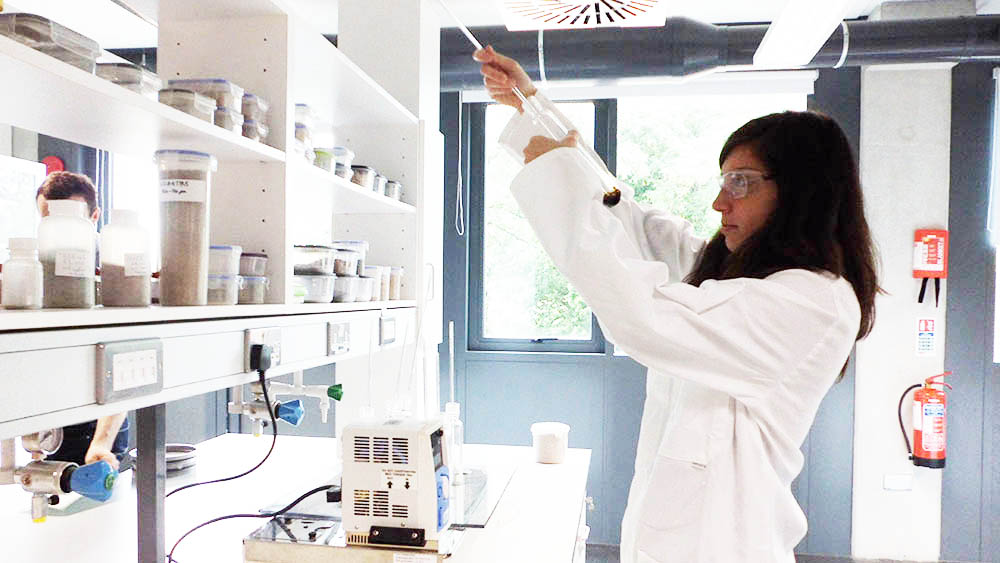Analysis of Process Liquids

Backgroud
Many of the various technologies that exist for the production of advanced biofuels produce liquid outputs, either from the primary conversion process or from the pre-treatment stage. At Celignis we offer a number of analysis packages to characterise these liquids.
We also have dedicated analysis packages to determine the composition of the bio-oil liquid output from pyrolysis, please click here for more detail on bio-oil analysis.
Analysis of Liquids from Pre-treatment Processes
Hydrolysis conversion processes often involve a pre-treatment stage to break apart the lignocellulosic matrix so that the solid that results is more amenable to the subsequent hydrolysis stage. Various types of pre-treatments exist and many of these, such as those involving dilute acids, alkalis, and other solvents, result in a liquid output that contains a significant proportion of the original biomass. Accurate characterisation of this liquid output is important since it can help to understand the efficiency and mechanisms of the pre-treatment process and allow for improvements or refinements to be made.
For example, many pre-treatment processes focus on the hydrolysis of hemicellulose from biomass and on the subsequent valorisation of these liberated sugars. Whilst analysis of the solid residue from pre-treatment would tell us the amount of hemicellulose removed from the sample it would not tell us the fate of this constituent in the liquid. Given that hemicellulose contributes a significant proportion towards the total mass of many biomass feedstocks, it is of major commercial importance that it is valorised as efficiently as possible.
The hemicellulosic sugars will most likely be present in a number of different forms in the liquid output from pre-treatment:
- As free monsaccharides - (e.g. xylose, mannose etc.) in solution.
- As oligosaccharides - i.e. in solution but not fully hydrolysed and instead present in short chains of sugars, known as oligosaccharides.
- As sugar degradation products - the pre-treatment conditions may have further-degraded the sugars to products such as levulinic acid, furfural and formic acid.
Click here to learn more about oligosaccharide analysis and here to learn more about the analysis of sugar degradation products.
Analysis of Liquids from Hydrolysis Processes
Most hydrolysis processes focus on obtaining free monosaccharides in solution that can then be converted to products such as ethanol, typically via fermentation. Hence, accurate characterisation of the liquid output is equally important here as it will indicate the concentration and proportion of available fermentable sugars. When considering fermentation, the presence of sugar degradation products is of particular importance as these can often inhibit the microorganisms used for sugar conversion.
Conversely, some hydrolysis technologies may target the production of these sugar degradation products in high yields as several, such as levulinic acid, furfural, and hydroxymethylfurfural, are of high value.
Analysis of Liquid Extracts from Biomass
The extractives of biomass can also be determined by analysing the liquid output resulting from solvent extraction. Please click here to read more about our extractives analysis methods.
Analysis of Process Liquids at Celignis
We have a number of analysis packages that allow for detailed characterisation of the liquid outputs from biomass conversion processes.
Sugars in Solution
If you are interested just in the free sugars in solution then we recommend analysis package P21 - Sugars in Solution which is detailed below:
P21 Sugars in Solution |
|---|
| Total Sugars, Glucose, Xylose, Mannose, Arabinose, Galactose, Rhamnose, Xylitol, Sucrose, Fructose, Sorbitol, Trehalose, Mannitol |
Sugars and Oligosaccharides in Solution
However, if you would also like to know if there are oligomeric sugars in the solution then we recommend analysis package P13 - Sugars and Oligosaccharides in Solution. This package involves a number of stages of analysis.
Firstly, the liquid is analysed using our ion chromatography system for the free monosaccharides and disaccharides in solution, just as in package P21 - Sugars in Solution.
Then we subject the liquid to a mild form of acid hydrolysis involving 4% sulphuric acid and 1 hour in an autoclave at 121 degrees Celcius. These conditions will break apart any oligosaccharides into their constituent monosaccharide units.
The liquid is subsequently filtered and analysed again on our IC system, to determine the amounts of various monosaccharides, after correction for any losses in sugars associated with the hydrolysis process. For each monosaccharide there will now be two values, the concentration prior to hydrolysis and that after hydrolysis.
With the exception of fructose (which degrades to hydroxymethylfurfural during the autoclaving step) all monosaccharides should be present in greater concentration post-hydrolysis. Hence, the proportion of each sugar that is present in the original liquid in the oligomeric form can be calculated by subtracting the pre-hydrolysis concentration from the post-hydrolysis concentration. As we report the sucrose and cellobiose contents separately we correct the calculated oligomeric glucan content using those data.
The constituents determined in analysis package P13 - Sugars and Oligosaccharides in Solution are detailed below. In our reports for P13 we report the pre-hydrolysis, post-hydrolysis and oligomeric concentrations of each sugar. Please click on the link for further information on this analysis package.
P13 Sugars and Oligosaccharides in Solution |
|---|
| Total Oligomeric Sugars, Total Sugars, Glucose, Xylose, Mannose, Arabinose, Galactose, Rhamnose, Xylitol, Sucrose, Fructose, Sorbitol, Trehalose, Mannitol |
Organic Acids and Furans
We can also determine the sugar degradation products in the liquid. The main degradation products of relevance can be classified as either organic acids (e.g. levulinic acid and formic acid) or furans (e.g. furfural and hydroxymethylfurfural) and these are determined in analysis package Organic Acids and Furans.
This analysis package also involves the use of our ion chromatography system but involves a different column and detector from those used for carbohydrate analysis. Package P22 is detailed below and you can click here to read more about sugar degradation products.
P22 Organic Acids and Furans |
|---|
| Levulinic Acid, Formic Acid, Hydroxymethylfurfural, Furfural, Acetic Acid, gamma-Valerolactone |
Our Recommendations for Evaluating Pre-Treatment Processes
We have a lot of experience in analysing many products (both liquid and solid) from biomass pre-treatment processes. These samples have covered a wide variety of starting feedstocks and pre-treatment processes and conditions. Below we recommend a set of Celignis analysis packages for getting the most detailed data about the whole conversion process:
(1) The Starting Feedstock
We recommend that analysis package P10 - Sugars, Lignin, Extractives, and Ash is used as this will fully remove the extractives prior to the hydrolysis stage meaning that you can be confident that the sugars reported in this package come from lignocellulose.
We would also recommend analysis package P12 - Sugars in Solvent Extract as this will report the amount of water-soluble carbohydrates in the sample. It is likely that water-soluble carbohydrates will be present in the liquid output of many pre-treatment processes and, if their concentrations are not known, it may be incorrectly inferred that such sugars present in the liquid must come from lignocellulose. However, if the water-soluble carbohydrate composition is known then these values can be subtracted from the amounts of sugars in the pre-treatment liquid to determine the amount of true lignocellulosic sugars that are present.
Similarly, if you expect that there will be some starch in your sample then we also recommend that analysis package P14 - Starch Content is also undertaken as starch may also be removed and hydrolysed in many pre-treatment processes.
Additionally, if you are interested in the uronic acid composition of the biomass then we recommend analysis package P15 - Uronic Acids is also undertaken.
(2) The Liquid Product from Pre-treatment
For the most detailed results, we would recommend that the liquid output is analysed using analysis packages P13 - Sugars and Oligosaccharides in Solution, P22 - Organic Acids and Furans, and P15 - Uronic Acids. However, if uronic acids are expected to be very low in your original biomass sample then that analysis package may not need to be undertaken.
(3) The Solid Residue from Pre-treatment
As it is likely that most of the extractives will have been removed in the pre-treatment, it may not be necessary to remove or characterise these. Instead, we recommend that analysis package P9 - Lignocelullosic Sugars and Lignin is undertaken to determine the lignocellulosic composition of the residue. We would also recommend that analysis package P3 - Ash Content is also undertaken to see whether the pre-treatment process significantly changes the ash content of the sample. Also, if the fate of the uronic acids is of interest then analysis package P15 - Uronic Acids could be undertaken.






